After a two-year hiatus, I will add another country to my list of visited destinations at the end of this year. That’s right we are off to the Bahamas over the Christmas and New Year break and I couldn’t be happier.
Lisette and I had been throwing around a few ideas over the last couple of months on where would be best to go and finally decided on the tropical paradise that is the Bahamas.
1. Costa Rica – For an eco-friendly trip and to catch the San Jose Carnival
2. Miami – For the beaches and the amazing New Year's Eve Parties
3. Oaxaca – For the culture and Night of the Radishes Festival
4. Jamaica – For an all-inclusive resort and relaxation (no festival)
5. The Bahamas – For the beaches, diving, food, culture, and the Junkanoo Festival
The Bahamas came out on top since I was able to pick up some reasonably priced flights with United Air and managed to score a great deal on accommodation. Ended up splitting the time between Freeport on the island of Grand Bahama and Nassau on the island of New Providence.
Now all we have to do is wait a few months to enjoy these gorgeous white sandy beaches while sipping on a colorful cocktail with a miniature umbrella in it. Hopefully we get to check out a beach like the one below:

One of the activities we always like to throw in whenever we travel to a tropical island is scuba diving. Lisette has completed her PADI certification and has dived the Great Barrier Reef, Borneo, the Philippines, and Bali to name a few.
Me on the other hand, well I struggle with claustrophobia which limits my diving ability. Will have to see how I go when we arrive since my previous attempt off Boracay didn’t go so well.
Another exciting consideration is booking a Bahamas fishing charter to add a thrill to this island adventure.

What we are both really excited about is the Junkanoo Festival on both Boxing Day and New Year's Day. This carnival-like parade through the streets happens throughout the country on each of the islands with the largest parade being in Nassau.
The origin of the word “Junkanoo” is rather obscure. Some people believe it comes from the French “L’inconnu” which means “the unknown,” in reference to the masks worn by the paraders. Junkanoo may have West African origins, as the costumes and conduct of the masqueraders bear similarities with the Yoruba Egungun festivals.
It is believed that this festival began during the 16th and 17th centuries. The slaves in The Bahamas were given a special holiday around Christmas time when they would be able to leave the plantations to be with their family and celebrate the holidays with African dance, music, and costumes.

One of the most unusual festivals in Japan is the naked festival (Hadaka Matsuri). Okay, so the participants aren’t completed nude, but picture this: tens of thousands of Japanese men with little more than a white loincloth (G-string or thong style) draped around their erm, loins, running crazily through the streets of the city to the main temple. The aim: trying to touch yet another naked guy who has been shaved of all body hair a few days before. To top it all off, this event takes place in February, one of the coldest winter months in Japan.
Before you think that this is some sort of bizarre and freaky version of the Full Monty, the festival has its origins in an attempt to dispel the plague and ward off evil spirits. Today, to cleanse themselves from such evil, one man – called the shin-otoko (literally “god man”) is chosen to take on the ills of the community. In preparation for what is considered to be a great honor, the god man must undergo fairly intense purification rites in the days leading to the event.
On the big day, teams of (rather drunk) thong-clad men lug a bamboo pole and continually shout “Wasshoi! Wasshoi!” as they snake their way through the streets to the temple. It’s quite a sight to see so many scantily clad men stumbling around in freezing temperatures, particularly in contrast to the layers of clothing worn by everyone else.

Once the men arrive at the temple, there is a fair wait until the shin-otoko arrives. The anticipation and frenzy build in the temple, however, as more and more teams of men arrive. As a spectator, it’s just as crowded trying to see what’s happening in the temple compound, but you can make out special bodyguards splashing icy water on the naked mass of men as the shin-otoko comes closer and as the crowd furiously fights and push to touch him.
As part of the festivities, at midnight, the lights are turned off and the temple priests hurl a couple of sacred wands (shingi) into the darkness. The men who catch these sticks apparently receive a year’s worth of good luck. Who wouldn’t want that?
The festival is held in various cities throughout Japan, however, the most famous is in Okayama prefecture, in western Japan (next to the Hiroshima region). It costs about 5,000 yen to get a good seat in the temple compound if you’re keen to be a spectator. Wasshoi!
I have been living in San Francisco for just over a year now and it really has been an incredible experience. The food selection is amazing, the people are friendly and interesting and there is nearly always something cool going on around town…. but…. I really miss having a warm summer.
Summer here typically consists of two months of relatively warm and clear weather from late September through November. This is really the only time you can safely head out in shorts and a tee.
To combat this lack of summer warmth we have been told to venture out of the city for weekends away as the temperature changes dramatically with only a 30-minute drive or more.
So we recently took this advice, rented a cheap car, and set off for sunny Santa Cruz which lies approximately 80 miles (128 kilometers) to the south of San Francisco.

The journey is around two hours but the drive itself was quite spectacular as we took the slower route along the coast down highway 1. Luckily for us, the weather was very clear, (normally a lot of fog as you exit the city) so the views were well worth the extra few minutes of driving.
There is a plethora of accommodation in Santa Cruz to cater to the influx of weekend warriors coming from the Bay area. The majority is made up of budget-style motels and they all seem to be located within a mile or so of the Beach Boardwalk.
For those seeking a more comfortable stay, Beachnest Vacation Rentals offers the finest assortment of vacation rentals and beach house rentals in Santa Cruz and nearby areas.
The majority of tourists seem to come to Santa Cruz specifically for the beaches and the historic Beach Boardwalk. It is surprising how often an advertisement will come on in San Francisco with their catchy tune but obviously works well.
Opened in 1907 the Beach Boardwalk is California’s oldest surviving amusement park and one of the few seaside parks on the West Coast of the United States.

The Boardwalk features both modern and classic rides, carnival games, restaurants, miniature golf, video game arcades, and family bowling, all located on a mile of sandy beach. One of the best things about the Boardwalk is that entry is free, of course, this doesn’t include any of the rides or games but is a great way to check out the park and decide if you want to go on any of the rides. Ride tickets cost anywhere from $3 – $5 and they also offer affordable ticket options where you can get a season pass for $69.95 which includes unlimited ride entry.
One of the main attractions of the park is the Giant Dipper. This classic wooden roller coaster was first opened in 1924 and recently surpassed a whopping 60 million visitors. It is a bone-shaking experience from start to finish but one that will definitely leave a big smile on your face.
Just off the coastline of Santa Cruz lies the Monterey Bay National Marine Sanctuary, the largest national marine sanctuary in the United States. Encompassing 276 miles of shoreline and 6,094 square miles of ocean it is home to one of the most diverse marine ecosystems on the planet, hosting marine mammals, seabirds, fish, invertebrates and amazing kelp forests that the local otters call home.
One of our favorite activities is to get out on the water in a kayak and Lisette and I always jump at any opportunity to do so. We decided that this time, rather than just grab a rental, it would be great to join a tour. After a quick search online I found Kayak Connection, a local business with great reviews that did both rentals and ocean tours through the marine park.

On the morning of our tour, our guide David greeted us with a big smile and thoroughly explained the safety aspects along with a brief on some of the marine animals that we would potentially see out on the water. We were lucky to have a gorgeous blue sky with very little wind as we set off paddling from Santa Cruz Harbor.
David was extremely passionate about the conservation of this protected area which was reflected in his enthusiastic approach to teaching us about the tainted history of over-fishing in the bay as we paddled through the harbor entry including how the otter population was nearly wiped out.
The area is a playground for whales, dolphins, and other marine life and we had only just cleared the harbor mouth when we were greeted by a friendly harbor seal. After an enjoyable paddle across the bay with spectacular views of the boardwalk and pier we arrived at the local surf spot, Steamer’s Lane. Here we watched a number of sea otters playing among the kelp. There were two in particular that were very inquisitive and swam right towards our kayak….amazing!!
On the paddle back we passed by the pier where hundreds of sea lions basking in the warmth of the sun on the wooden foundations. One even swam out to greet us and followed close behind for a while as we head back to the harbor.
Overall this was an incredibly memorable experience and one I would strongly recommend to anyone looking for an eco-friendly adventure.
The Redwood Canopy Tours at Mount Hermon offers visitors an exciting eco-adventure into the redwood canopy of the Santa Cruz Mountains. Enjoy the coastal redwood forest from the unique perspective only a zipline canopy tour can offer. The two-hour guided tour includes six zip lines and two sky bridges at heights of up to 150 feet. Each tour of up to eight is led by two certified guides who share their ecological knowledge and bring the history of the Santa Cruz redwood forest to life. The Redwood Canopy Tours are the original canopy tour ziplines in the redwood forest and is the first facility of its kind in the region.

Of course, if you are coming to Santa Cruz you are more than likely going to be here for the beaches and Boardwalk but here are a couple of other attractions you might like to check out while you are in the Santa Cruz area: The Mystery Spot and the Santa Cruz Surfing Museum.
We were looking for somewhere interesting to eat on Saturday night and happened to stumble across The Greek – Authentic Cuisine restaurant (with a little help from Yelp). This family-run establishment is apparently quite iconic in Santa Cruz due to the lively owner Vasilis and coincidentally it turned out to be his 64th birthday on the night that we were there.
The restaurant has a fun and lively feel with traditional Greek live music, plates smashing on the floor and a homely feel to the decor. Sara, our waitress, noted that Vasilis's hand-sketched all of the artwork that adorns the walls….quite impressive we thought.

The meal portions were very generous so we decided to go with the smaller size house specialty salad along with some dolmathes and tzatziki for starters. All in all the food was delicious and well worth checking out if you plan on visiting Santa Cruz.
Ivrea is a small city in the province of Turin, in the northwest of Italy. While it’s not heaving with tourist attractions, there is one time of the year when the town is overrun with visitors – the quirky Ivrea Carnival (Carnevale di Ivrea), otherwise known as the Battle of the Oranges.
In February, thousands of the city’s citizens congregate in the town center to throw one of the world’s greatest food fights using – you guessed it – oranges. Held over three days – Sunday to Fat Tuesday – during this festival, the streets are all lit up and filled with the smells of oranges and other food specialties, which are being served in the streets. On the Sunday, people are served beans for free – perfect for filling you up without you needing to spend a cent.

While the history of the festival isn’t clear, the festivity apparently commemorates the city’s rebellion against a local duke in the 12th century. The duke attempted to rape a miller’s daughter on the eve of her wedding. His plan was foiled when the young woman beheaded him and the populace then burned his palace.
Every year a young girl is chosen to play the role of the brave young woman, named Violetta. Today carriages represent the duke’s guard, while the orange throwers are the revolutionaries. Originally beans are used then apples that are being thrown, but later in the 19th-century oranges started to be used, which (rather morbidly) represent the duke’s chopped off head.

There are nine combat teams that throw oranges at each other during the festival. You can volunteer to join one of the teams to throw oranges. You will also see a load of red hats, which symbolizes freedom. Anyone that wears a red hat cannot throw oranges – but you also won’t be a target of a flying fruit either.
By far though, the best way to have fun is to join the food fight in the battle areas. The carriage takes turns to enter the battle zone and the horses hang around for a while at the center, to then be surrounded by unarmored orange-throwing people in medieval costumes. The person in the carriage also throws back oranges to the mob below.
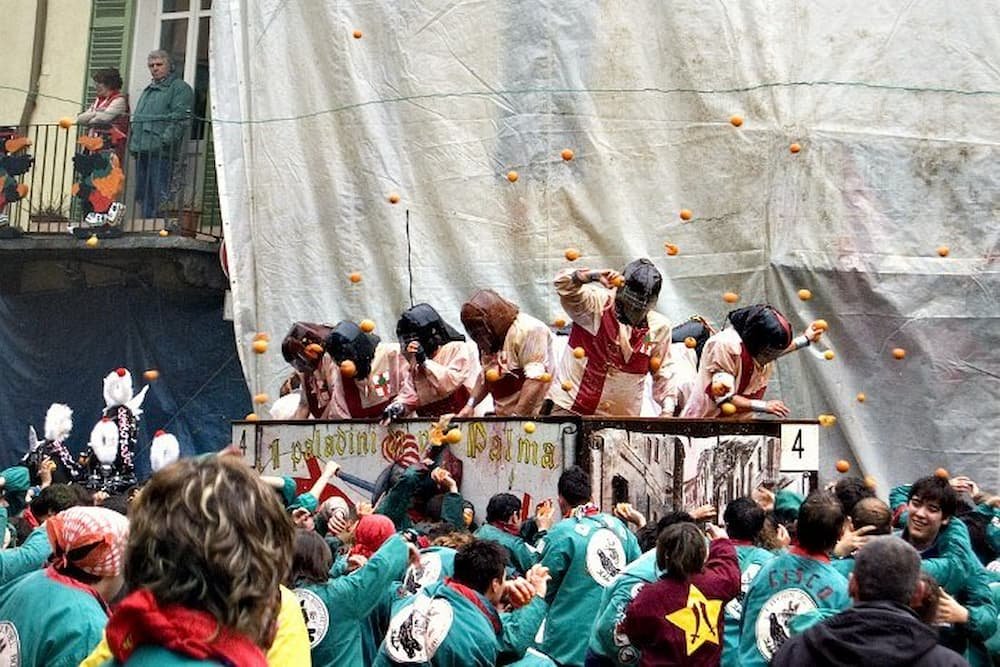
Being pelted with oranges that feel like frozen golf balls may not be everyone’s idea of fun, but the event ends with a ceremony to announce the winners of the battle and an awesome bonfire in the center of the city. Be sure to also check out the river after the battle, which carries tons of used oranges back downstream.

Two days ago, after almost a week of going back and forth, I started the haunting journey to Poveglia Island, the island of no return. A small island off Venice, Poveglia has one twisted history – it was a dumping ground for diseased bodies on the several occasions that Venice was gripped by the bubonic plague, with about 160,000 infants and adults meeting their grisly fate by being thrown into huge bonfires or pits. In the 1920s, a mental hospital was built on the island and according to folklore, the doctor tortured and killed his patients until he was finally thrown from the bell tower. He apparently survived but was strangled by a strange mist that came out of the ground.
This particular goal of traveling to Poveglia was FAR from easy for me. As I child I was haunted by horrific nightmares that would keep me up all night or send me running to the safety of my parents’ bed more times than I care to remember. As a result, I’ve yet to even watch a horror film from start to finish. After sitting through paranormal activity (covering my eyes for the last ten minutes), I spent the next week avoiding my basement like the plague. You could say that when it comes to the things that go bump in the night, I react about as well as the cowardly lion. But at the end of the day, this was something I needed to do and I wasn’t backing down.

Getting to the island was surprisingly easy. I decided that paying 180 Euros for the short boat ride was far too much and went out in search of a better deal. Shockingly the first captain I talked to was willing to make the trek for only 130. After reading countless stories online about the locals who refused to approach this place and the amount of time other people had invested in finding a soul brave enough to take them there, I was convinced I was going to be in for much more of a fight.
When we got to the island and I watched him pull away, things didn’t really hit me the way I thought they would. Being 30 degrees outside, sunny and watching the hundreds of boats zooming by, it wasn’t exactly haunting. Even the mental institution, while admittedly spooky, lost some of its “charm” in the cloudless sky above.
All of this changed when the boat motors quietened and darkness fell. Being without a flashlight, headlamp, or torch I was at the mercy of the shadows and the looming silence that gripped me. Laying 10 feet from the institution I was frozen in place, afraid that even the slightest sound would wake the dead. My mind became a slave to the various creaks and moans of the building, working overtime and twisting my imagination like a drug-induced hallucination. It was all too much for me, but I had nowhere to run. I grabbed my pack and bolted to the dock about 50 feet away praying for rescue, but I was imprisoned and escape was impossible. I slumped down on the dock and tried to calm myself, but there was no way in hell I was going be to my original resting place. The thought of the 160,000 burning bodies and the evil doctor was too much to overcome. So I slid into my sleeping bag on the dock and prayed for the sweet embrace of a dreamless sleep to bring me safely to morning. But sleep wouldn’t come. No amount of ambiance would have helped me in this situation; I was at the mercy of my surroundings and all I could do was take whatever the island decided to throw at me. For the next seven hours, I stayed completely still with my eyes and ears wide open and my brain conjuring up horrible scenarios surrounding my untimely death at the hands of the living dead.
But I never faced death in the face, never saw any demons, and never shook hands with the doctor. The sun rose just as it always has and with the return of my water taxi, I was brought promptly back to the world of the living unscathed and unchanged. Would I ever go back to the island and do it all over again? Hell no. Do I still believe in ghosts? Yes. I may not have seen or heard any, but the overwhelming sense of evil that seeped into your bones inside that old broken-down hospital would be enough to convert even the hardest skeptic.
This is the third and final part of a series of posts on my experiences at my first ever Burning Man. If you missed the first two parts you can read them here:
Part 1: Burning Man – From a First-Timer’s Perspective
Part 2: Burning Man – Art, Theme Camps and More
Think for a moment about the best places in the world to party and I’m sure a few standouts come to mind. The top of my list would probably look something like this: Ibiza, Miami, Koh Phangan, Rio de Janeiro, Las Vegas or Cancun to name but a few. Well, take a piece of all of those places, put them in a blender, mix thoroughly and you are somewhat close to the day/ night-time party experience of Burning Man.
I don’t think I will even begin to do this explanation justice but I will give it a shot….
– Some of the best DJ’s in the world
– Incredible venues with mind-blowing sound systems and lighting
– Genuinely nice people who are there to have a good time (not to spoil yours)
– No lining up for hours to get into a club
– No discriminative dress codes – WEAR WHATEVER YOU LIKE!
– Not feeling the music or crowd? Hop on your bike and pedal to the next one, or jump on an art car (no painful taxi line in this place)
– No wanky bouncers…. in fact, no bouncers at all
– No expensive cover charge – just wander in for free
– Free drinks at the bar! Just remember to bring your own drinking vessel (cup)
– No curfew or lockout
Ok I’m sure I have missed out on a few bullet points but seriously with benefits like these who cares!
When you consider that Burning Man is quite possibly the most epic party place you will ever visit, then realize this is only one facet of the complete experience, it is difficult to comprehend. I have a feeling this is why so many Burners return, year after year, to the desert.
One of the things I seem to get asked most since our return is about the drug culture that seems to be synonymous with Burning Man.
If you are going to take them, be discreet, and whatever you don’t go lighting up a joint in public. This is not San Francisco people…. the Nevada police don’t take kindly to drugs (or even open alcohol containers) in public.
So with that out-of-the-way, there’s really no amount of words that can describe what a crazy, fun experience the parties are at Burning Man. So rather than try, here are some cool pics to whet your appetite instead:








As I mentioned in my original post, knowing what clothes to pack is up there among the most challenging aspects when preparing for your first Burning Man. Sure, you can look at hundreds of pictures online and get a feeling for what others have worn in the past, but there will always be that aching feeling of “Will I fit in?” or “Are people going to be judging me based on my attire?”.
I was advised early on to steer clear of any branded clothing. One of the ideals of Burning Man is non-conformity, so try to avoid wearing the clothes that you would normally wear at home in your day-to-day life.
You don’t need to go out and spend hundreds of dollars at costume shops or specialty Op shops to try to fit in either. Go to a secondhand store, buy some crazy stuff that you think looks cool, make some adjustments if needed and you’re off.
All I can say is wear whatever you want to wear. It doesn’t matter if you wear pink striped pants with a blue polka dot shirt – if you like it wear it.
Living in San Francisco we are pretty accustomed to nudity. We see it pretty often at various festivals and events held around the city. Burning Man is like San Francisco on steroids….. everywhere you go be prepared to see a full-frontal display of someone’s package. By the end of the week, you will have seen all shapes, colors, and sizes – both male and female so leave your prudish ways at the gate.
Goggles
Preferably not too tinted and with good peripheral vision
Dust Mask
A bandana doesn’t really cut it in a heavy dust storm
Good shoes
Boots are probably going to be best (flip-flops and bare feet are a no-no due to the alkaline soil)
Sunscreen
Derrr… you are in the desert
A Warm Jacket
It gets cold at night
Wearable Lighting
It also gets very dark at night and you want to be seen



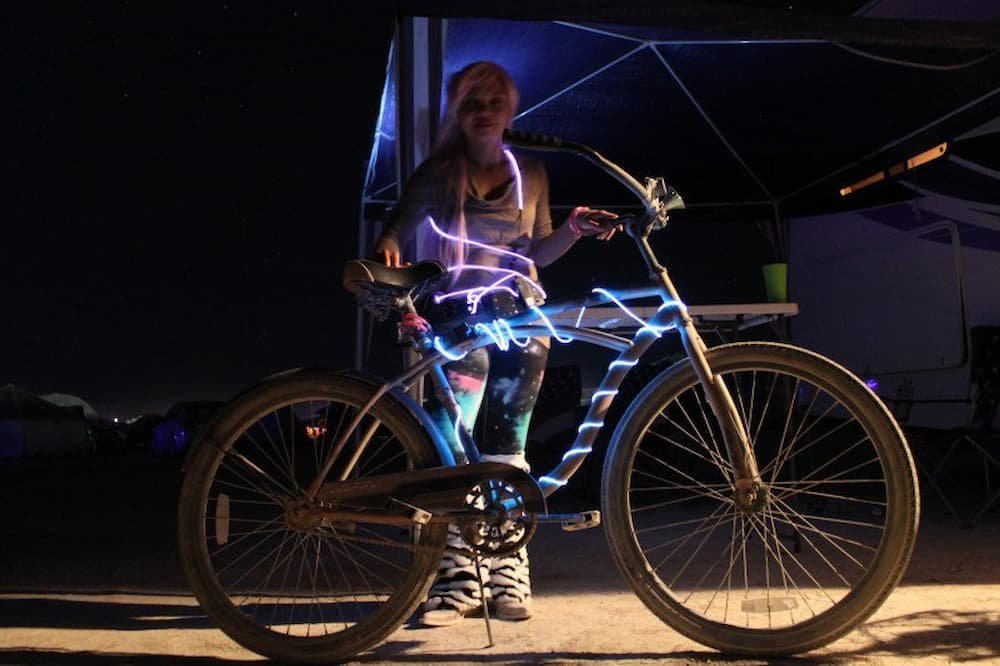



One of the 10 Principles of Burning Man is Gifting – “Burning Man is devoted to acts of gift-giving. The value of a gift is unconditional. Gifting does not contemplate a return or an exchange for something of equal value.”
I was overwhelmed by the thoughtfulness that went into some of the gifts people had prepared. To be honest, I feel like this is where we were the least prepared of all. That is not to say that we were takers and didn’t give….. more so that I would like to invest more into gifting next time.
Generosity comes in all shapes and sizes – the offer of a jalapeno tequila shot one morning…. or perhaps an iceblock on a stinking hot afternoon.
You don’t need to go all-out making material items for gifting too. The gift of a heartfelt smile (to everyone you meet), a friendly massage, a helping hand or food and drinks are all perfectly acceptable when there is sincerity and warmth behind them.
Burning Man really does seem to highlight the aspects we soon forget in human nature… THERE’S GOOD IN EVERYONE!
Here are a couple of fun little trinkets that I was given. The best part for me is that someone took the time to make them.


The roots of Burning Man began as a bonfire ritual on the summer solstice in 1986. Larry Harvey, Jerry James, and a few friends met on Baker Beach in San Francisco to burn a 9ft (2.7m) wooden man as well as a smaller wooden dog.
Since then the annual ritual has grown each year, both in number of participants and in the size of the Man. This year was no exception as we arrived to find a mammoth alien-looking man standing atop a UFO. Inside the multi-story structure, there were all sorts of extraterrestrial paraphernalia, some zoetropes and exit slides…. not the best to attempt with a bare bottom I soon discovered.
The Man is located smack bang in the center of the city which makes it the most important landmark if you happen to get lost out on the playa. Due to this, it is also a popular meeting place.



The week-long event culminates on Saturday evening with the ceremonial burning of the Man. What seemed like the entire city population was out on the playa to watch the spectacle, starting with an inner circle of fire dancers and emanating out to a ring of brightly lit art cars, all circling the Man.
Before the Man burns, there’s a fireworks display which is met with cheers and roars from the eager crowd. Then the man is lit, creating a frenzy of whistles and more screaming before finally the entire structure erupts into flames, the heat so intense you can feel it from a football field away.


In addition to the burning of the Man, the burning of the Temple has become an important ritual on Sunday. Throughout the week you will find people congregating at the temple. Whether in prayer, meditation or simply leaving messages to lost loved ones, the temple is a highly personal and spiritual experience.
Every year, like with the Man, the Temple has a new theme. This year’s theme was The Temple of Whollyness – an epic central pyramid standing 64ft (19.5m) tall, designed with sacred mathematical proportions and constructed using innovative building techniques without the use of nails, glue, or metal fasteners.
The Temple’s name was derived from the idea that spirituality is a balance between three states of mind – to be holy, holey, or wholly present.




Our arrival onto the playa was such a smooth experience with barely a queue to be seen. Our exit on the other hand was not.
We had been tossing around the idea of leaving on Sunday (either just before the temple burn or just after) ‘vs’ leaving on Monday but it was mother nature herself that eventually decided for us. As it turned out there was a huge storm bearing down on Black Rock City that was due to hit by 12 pm on Monday.
The Burning Man committee broadcasted a message over the local radio station advising everyone to leave by 12 pm Monday or face being stuck on the playa as they were locking down the city. This created somewhat of a “mass exodus” just prior to sunset (before the temple was due to burn).
At 6.30 pm, we left our camping spot and joined the exit line. It wasn’t until five hours later that we reached the paved road in total darkness. By this time, I was already far too fatigued to be driving but stupidly I continued on for another 2.5hrs while the others slept in the back of the RV.
Luckily I was able to switch out with Ryan about 40 mins from Reno and we arrived there in one piece around 3 am.

It is not uncommon to experience a low after returning from a multi-day festival. As you should see by now, Burning Man is a place unlike any other and the transition back to reality can be a difficult one for some people. Luckily for us, we live among Burners….. our neighbors have been more than seven times each and there are several “post Burning Man” events held in San Francisco every year.
The reality still hits you hard though. That first day back where all you can do is dream of being on the playa. For now, I am happy processing and writing about this unforgettable experience that was my first Burning Man…….. anyway there’s always next year!

I hope that, in some way, my experiences can help you to get out there yourself. Thanks for reading all my rantings and a special thanks to my neighbors Lorna and Bertrand for your words of wisdom and everything else you have done to make our first Burn so very special.

This is Part 2 in a series of posts on my experiences at my first ever Burning Man. If you missed the first part you can read it here – Burning Man from a First-Timer's Perspective
Black Rock City is a city in the desert that was specifically built for one purpose – Burning Man. Over the years the event has grown from a small gathering of 20 people at Baker Beach in San Francisco to approximately 68,000 people in 2013 in the desert. Check out this cool timeline on the Burning Man site: Burning Man Timeline from 1986 to 2012.
Black Rock City resembles an analog clock face, with radial avenues representing the hours (2.00 through 10.00) and alphabetical streets in concentric streets around the circumference. The three most prominent landmarks are as follows:
Located at the center of the clock.
Located at 12.00, this is a place for reflection and prayer.
Located along the midline facing the Man at the 6.00 position; it serves as a good meeting place.
As you can see it is quite a distance from one side of the city to the other and believe me you will need to navigate much of the city as possible to fully appreciate the spectacle. The distance is also deceiving as the arched streets are much longer than it looks on a map, plus the ground is soft and uneven making for a bumpy ride at times.
Taking all of this into account there is no doubt in my mind that you need to have some form of transportation (other than your legs). Like most people, we opted for bicycles… although another really cool way of getting around is on an art car.
Riding your bike poses a few unique challenges on the playa. It is not uncommon to be riding across the playa and be struck by a dust storm or whiteout. Make sure to be very careful if this happens. We were riding towards the Man one afternoon when we got hit by a huge dust storm and couldn’t see two feet in front….. next thing you know a huge pirate ship emerged from the white, powering towards us.

a) Make sure to carry plenty of water with you (especially when venturing into the deep playa).
b) For your protection wear sunscreen, a hat, dust mask, and goggles.
c) Deflate your tires to compensate for the soft sand.
d) Illuminate your bike at night with a headlamp, tail light, and El-wire
e) Have some sort of bell or horn to warn people if they are in your path.

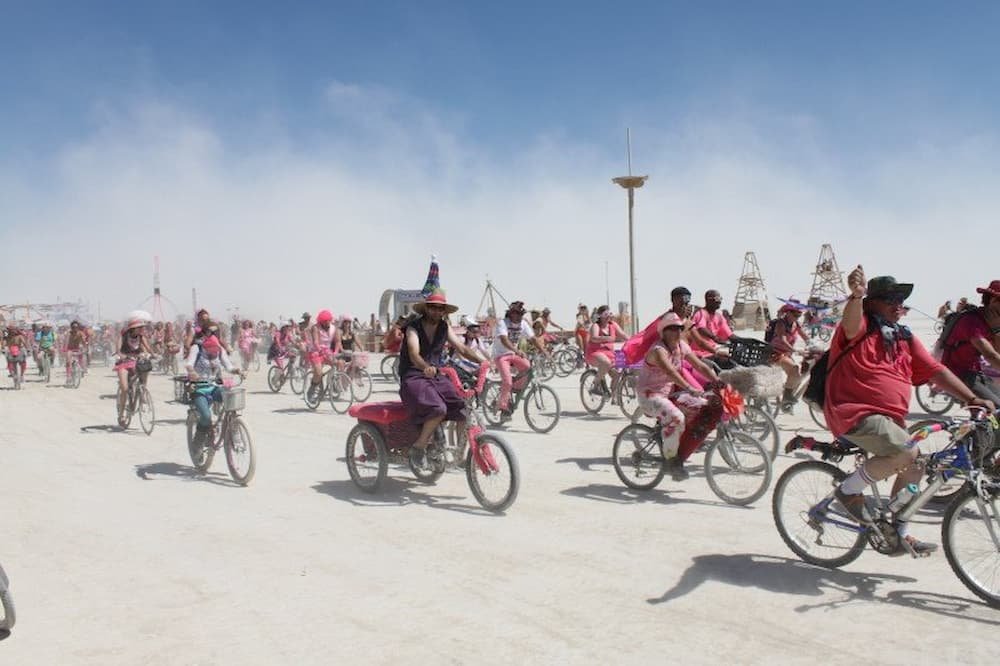

Some of the most creative people on the planet make the journey to Burning Man each year. Both for inspiration and to showcase their talents. It is common knowledge that many of the creative producers and set designers from Hollywood come to the playa in search of the bizarre and wonderful art that is on display.
Months of preparation go into the theme camps and art installations that you will see here – not to mention thousands of dollars. Art installations are on display throughout the city but you will find the biggest (and best) scattered around the central playa.
I have posted some of the art below but for a more comprehensive guide with some background check this link.



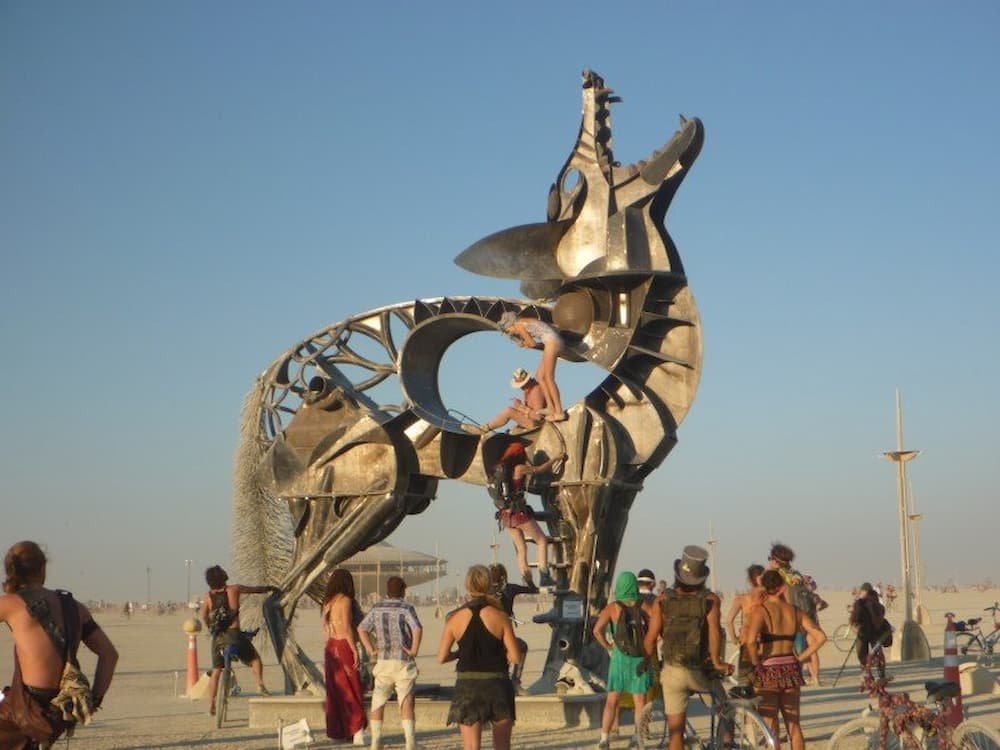
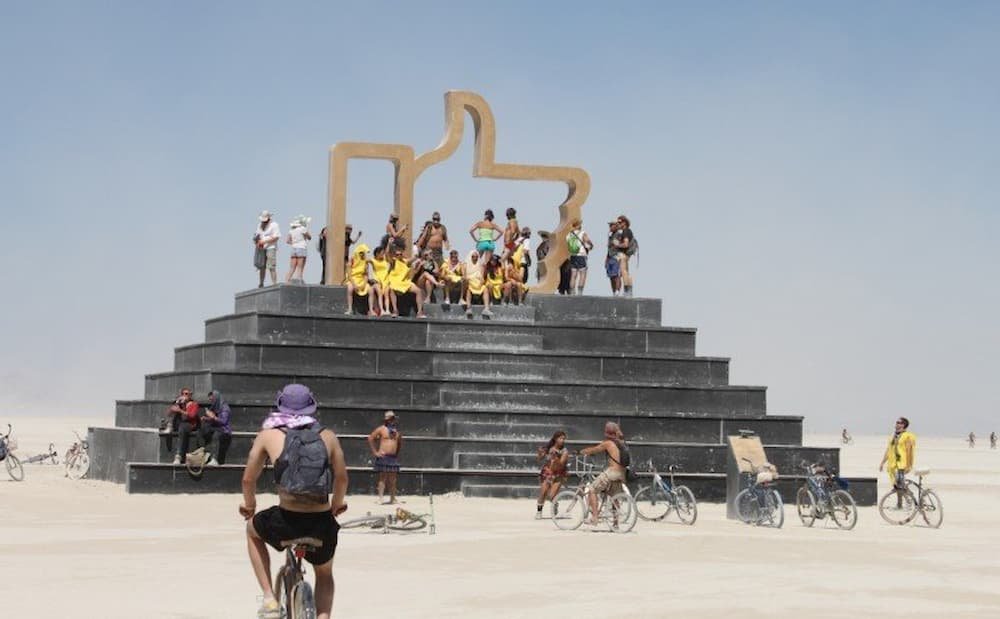


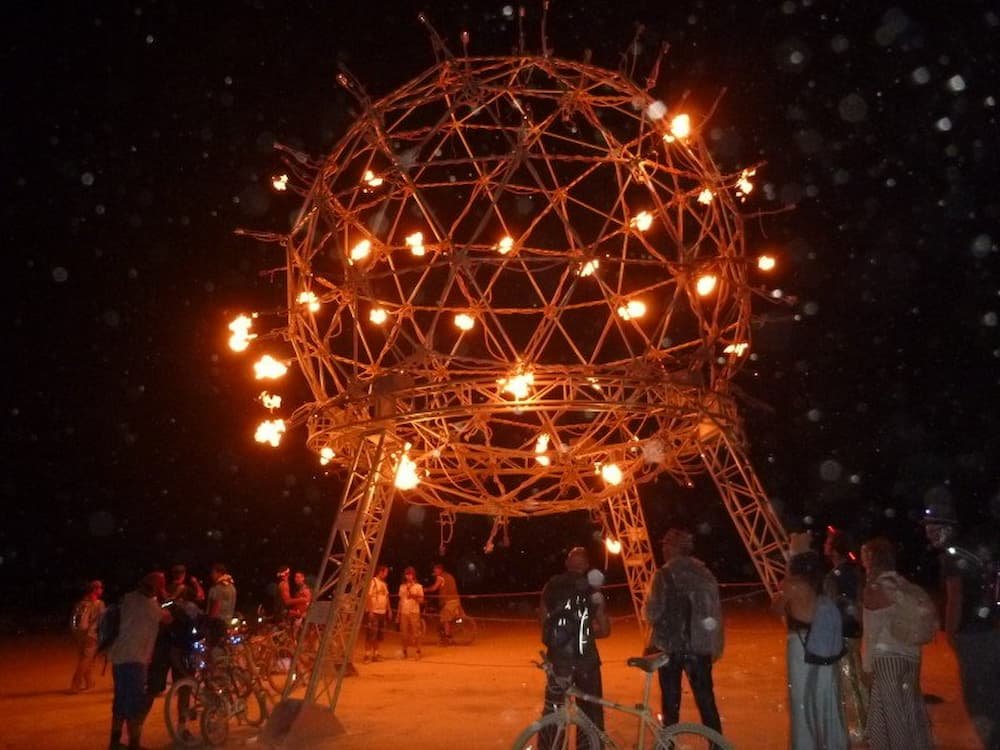







This magnificent piece was one of my favorites. It is titled “Truth is Beauty”.

Now that you have seen a selection of immovable art structures let’s take it to the next level. Imagine one of these crazy pieces of art – now incorporate a car, truck or bus so it can move throughout the city. Welcome to the world of art cars!
Not only do they look good but these moving Picassos often have pumping sound systems and the bigger ones can take a decent number of people. It is like your own nightclub on wheels.
Throughout the day you will hear the thump of a heavy bass as an art car comes rumbling through the streets or on the open playa. Just wave one down and ask for a ride to where you are going… you never know where you might end up.
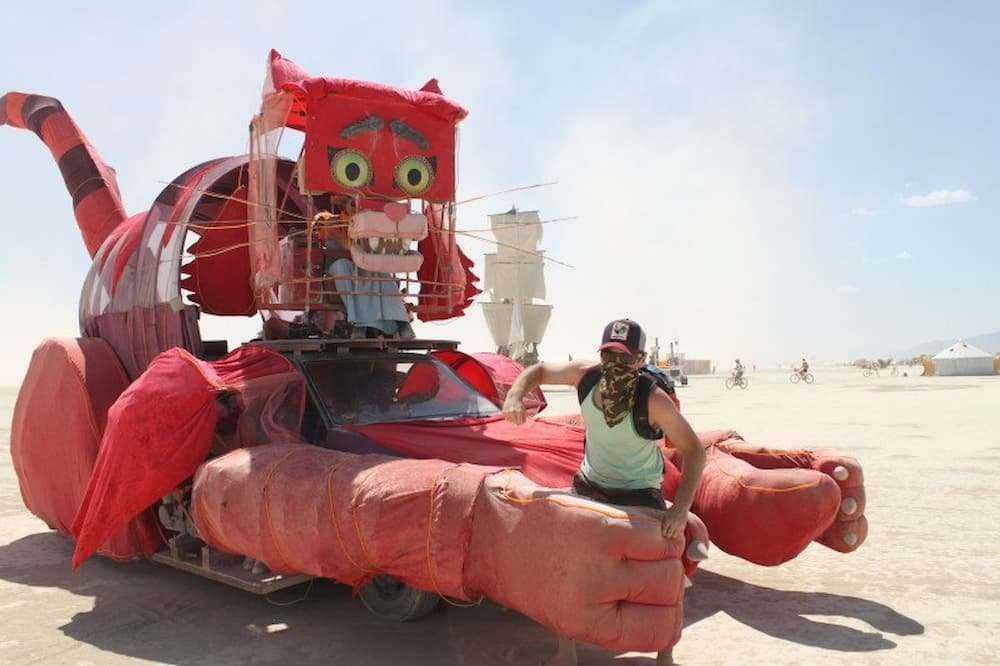





There was even a full-sized tall ship!
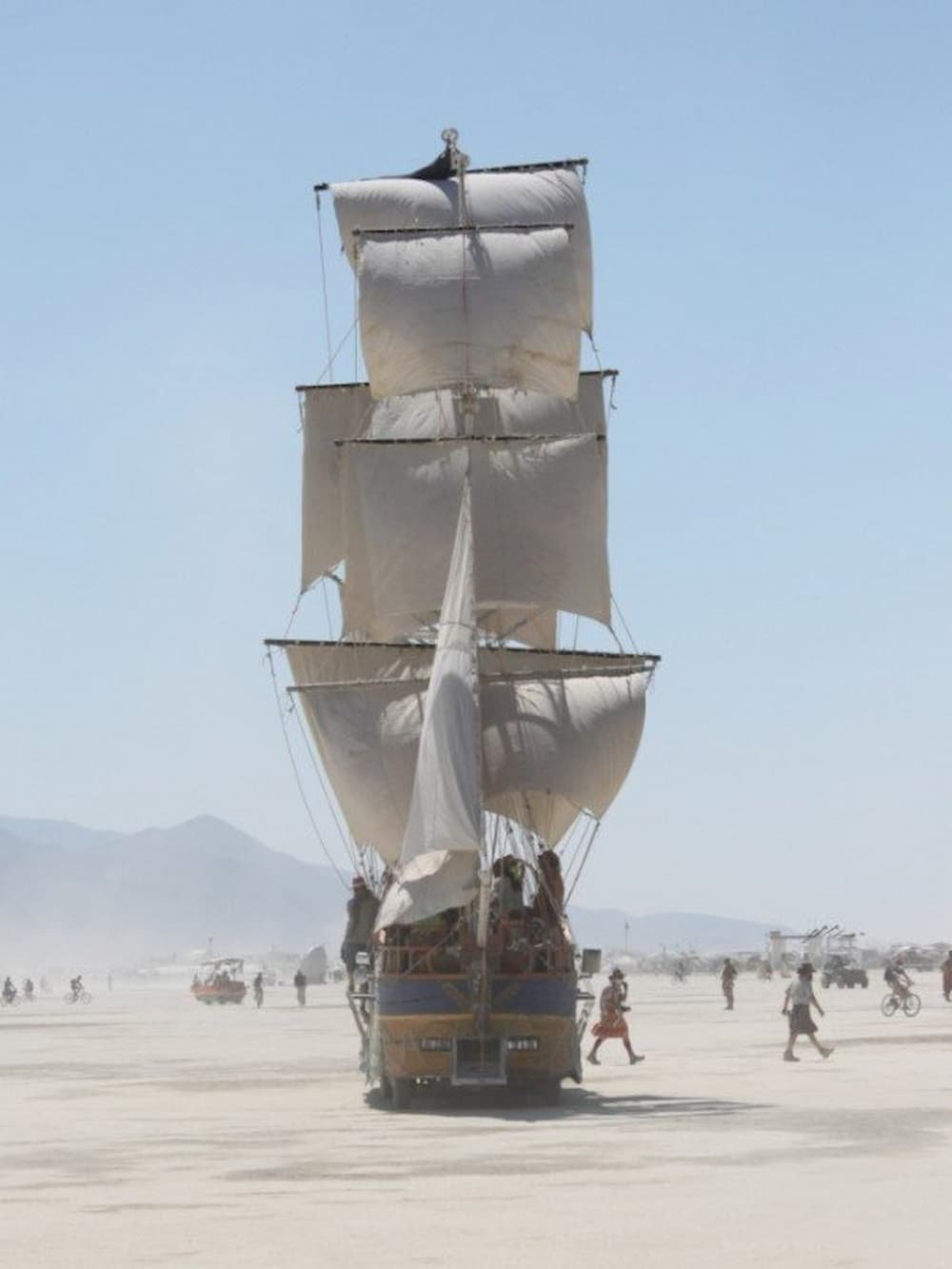
It is mind-blowing to see the imagination and effort that some people put into their theme camps. Clearly, the place to be is on the Esplanade – front and center. Most of the major theme camps seemed to revolve around a musical or clubbing aspect with some quirkiness thrown in for good measure.
Some of my favorite camps were the ones that provided a decent amount of interactivity. You could get a snow cone, or how about a massage and your hair washed? There was no limit to the creativity and thoughtfulness that went into making things just perfect for everyone.
Got a flat tire? No problem – there’s a camp that will help fix your bike. I know this because Lisette got a puncture and we had to find a way to fix it.

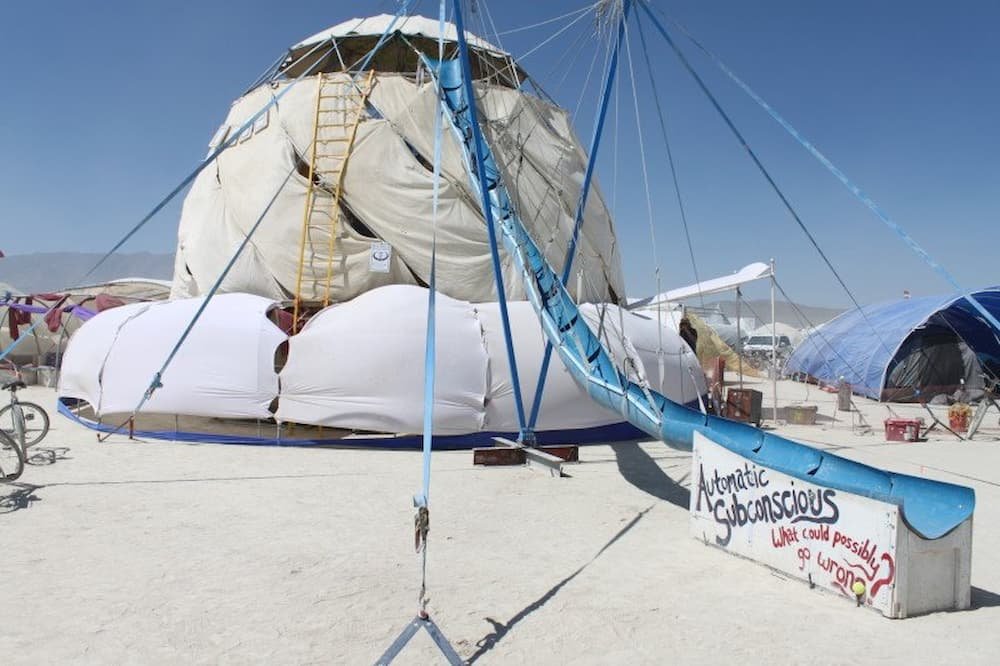
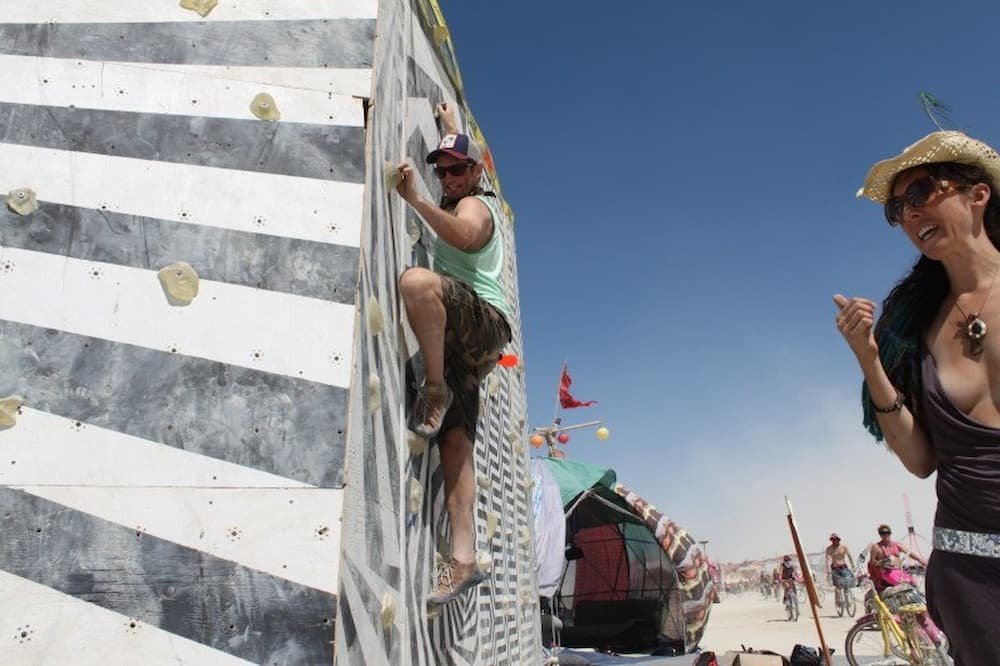

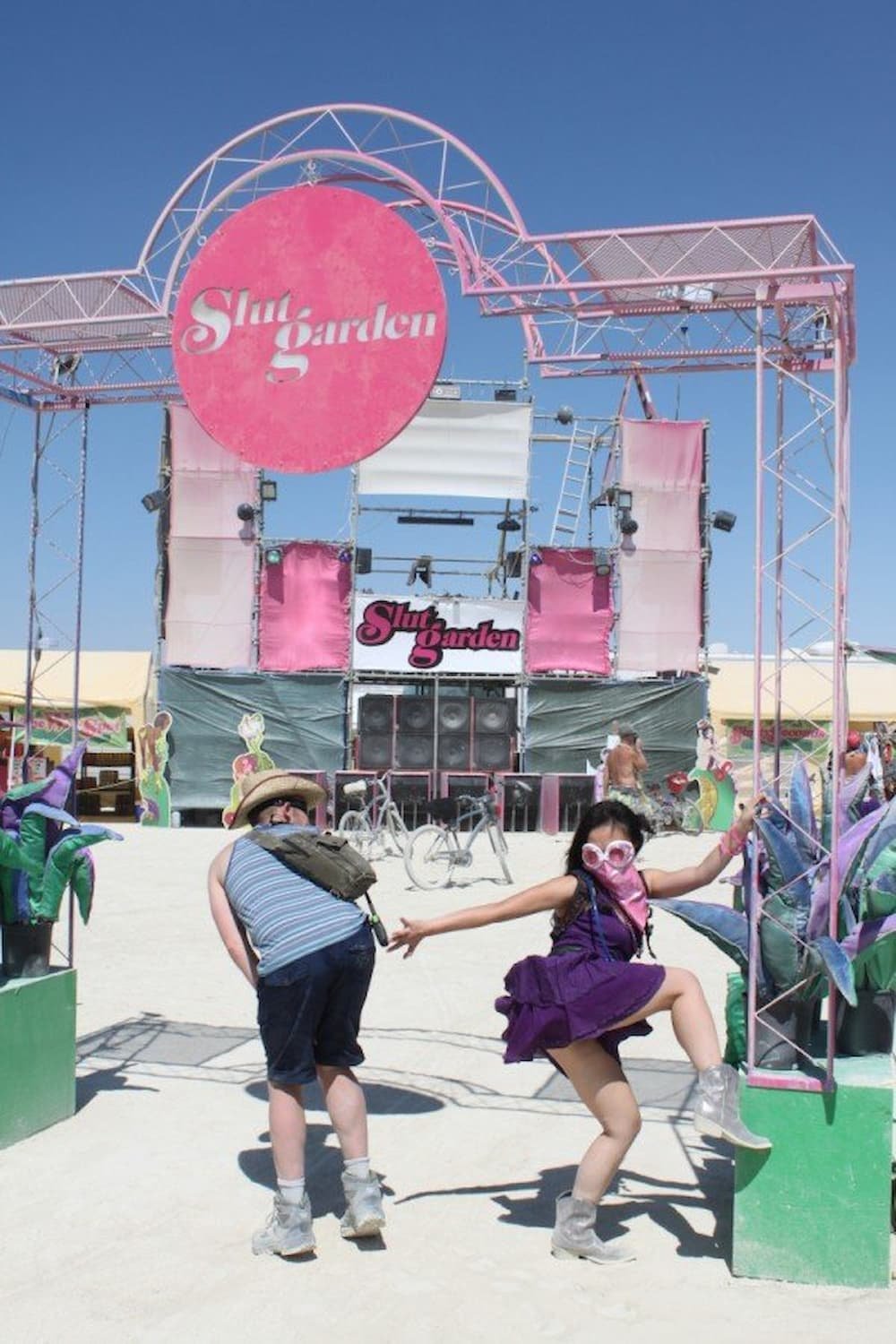
Well, it looks like we are going to need a Part 3 in this series.
Just in case you missed it, here is the link to Part 1 – Burning Man – From a First-Timer’s Perspective
UPDATE: Here is the link to Part 3 – Burning Man – A Party on the Playa
Again all questions and comments are welcome.
WE ARE BACK…. back to the “default world” as most Burners would put it. That’s right, we managed to conquer our first Burning Man and boy did it exceed all expectations.
In this post I hope to outline some of my experiences, along with some commentary and advice to follow up from my earlier assumptions (which you can read here – Preparing For My First Burning Man).
Just in case you don’t know my style of writing – I’m a big fan of breaking things up into sections. I find it easier to write and hopefully easier for you to skim and find that important piece of information you might be looking for.
I have to say that this was the most researched week-long trip that I have ever been on and my expectations were extremely high based on what I had seen and read. Normally this would be a very dangerous situation, surely setting myself up for disappointment but this is Burning Man and even still my mind was TOTALLY BLOWN!!!
So without further adieu here we go.
Not having a car in San Francisco is nothing out of the ordinary. Just take a ride on the No. 38 MUNI and you will see what I mean…. people crammed into every nook and cranny, fighting for breath below a stinky armpit. That being said, I very rarely travel across to the East Bay so my knowledge is pretty limited on how to get around there.
It just so happens that the RV we rented was located in Dublin which is a good hour BART ride into unknown territory.
A short walk from the station to the car yard then a loooong wait to get our vehicle. Be prepared to wait for up to three or four hours while they prepare your paperwork and make sure the RV is ready to hit the road. Thankfully the staff are quite well prepared for the Burning Man influx and, although the wait was long, we had a comfortable waiting area with free coffee and plenty of fellow burners to chat with.
Once the RV was ready to go we had a quick briefing from one of the staff. They outlined everything we needed to know like how to use the generator, storage options, refueling, toilet and shower.
TIP: We had a friend from Australia traveling with us and got him to book the RV using the international site. We ended up saving close to 50% because they charge a higher rental fee to the local market.
I might even consider outlining a breakdown of our costs in another post if that is something of interest to people. Just let me know in the comments.

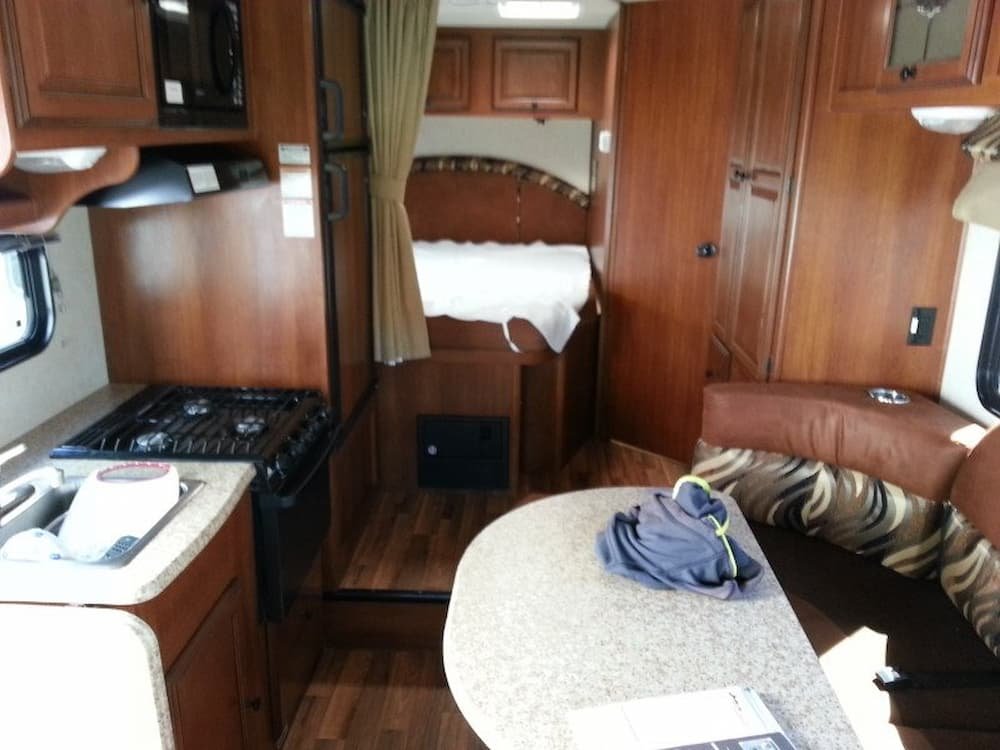


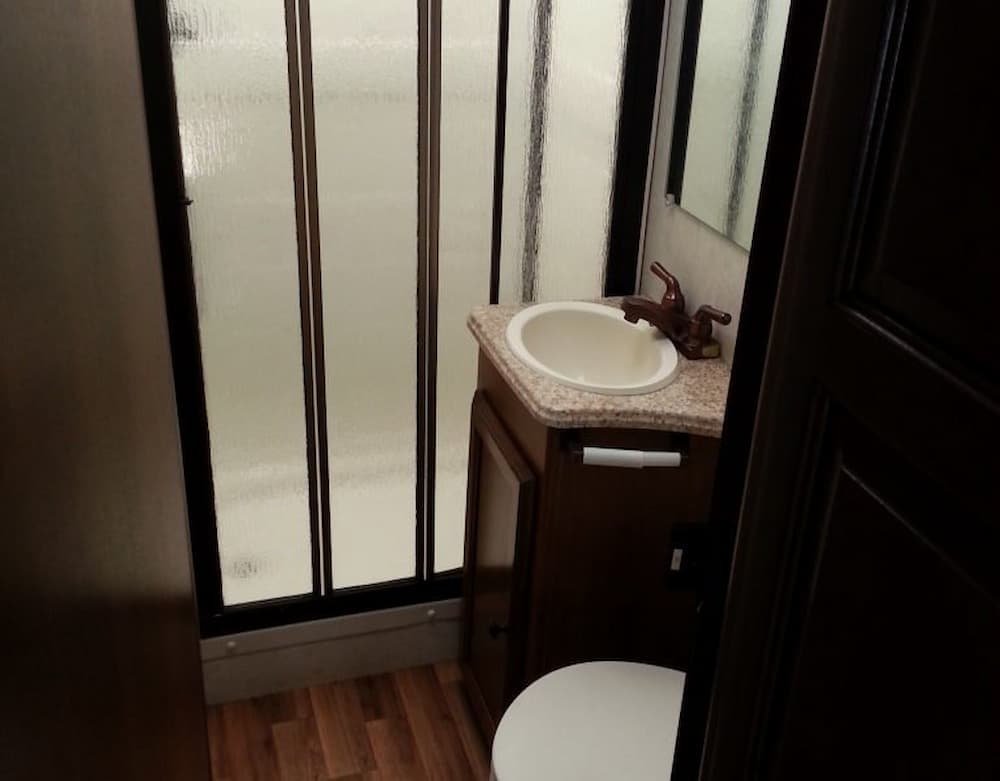

In my previous post, I briefly touched on what to pack for the BURN outlining a fully comprehensive packing list that has been put together by other veteran burners. I would like to add my thoughts on what to take for food. Please bear in mind this is based on the fact that we had an RV with a complete kitchen including a fridge/ freezer, stovetop, and microwave oven.
Considering that there is so much to see and do on the playa I figured that it would be a good idea to prepare a selection of meals before leaving. We decided on three different meals:
1. Pumpkin & Chicken Curry with Rice
2. Spaghetti Bolognese
3. Vegetable Stir Fry
Ryan and I spent one afternoon cooking up a storm as you can see below. We purchased some plastic tupperware and individually packed all of our main meals for the week, then froze them. This simple prep turned out to be one of the best moves ever….. if you have ever tried to cook while hungover then you will appreciate what I mean. The microwave was our best friend in the RV.

It is a good idea to pack some healthy options. For breakfast, we went for muesli and fruit with milk – simple to make, simple to pack.
Another suggestion is to take plenty of snacks. Snacks are great to share among your neighbors and other burners you invite into your camp. We decided on a selection of junk and healthy:
1. Celery & Dip
2. Corn Chips & Salsa
3. Chocolates (Mini Milky Way)
4. Trail Mix
5. Macaroons
In the Burning Man Survival Guide, they say that you should take at least 1.5 gallons (5-6L) of water per person a day. This may sound like a lot of water but let me assure you water is the most important item you will pack. The combination of hot dry air, dust, and exercise will dehydrate you like nothing else so make sure you always have liquids with you on the playa.
I am not a huge water drinker so decided to spice things up a bit by taking a selection of Powerades…… waaaay too many it turned out. So much so that I don’t think I could even look at another Powerade for months.
As a side note – A camelbak is a great way to keep a decent amount of water with you at all times while acting as storage also.
The drive from San Francisco is reasonably straightforward, or so I thought. We made the push to Reno on the first day deciding to have a rest there and make a final push for Black Rock City in the morning.

Reno is the perfect stopover if you are traveling from most places in California. It leaves a drive of approximately four hours to the turn-off and has enough Vegas-like cheese to put a smile on your dial.
After finding a dodgy parking spot on the side of the road we ventured into the Circus Circus Casino for a few mojitos.

Let’s just say that the drinks were strong….very strong. Lisette, being the lightweight that she is, was entertaining after her first. Not a bad night when the drinks are only $3.75.
That night we slept in the RV on the side of the road – bad idea. The road was cambered which meant that Lisette and I ended up in a pile on the curb side of the bed in the morning. Nothing a strong coffee couldn’t fix though.
We arrived at the turn-off around lunchtime and to our amazement, the line was almost non-existent. They have set up a lane system to ease the processing of more than 50,000 people to the city and we had our choice of any lane.
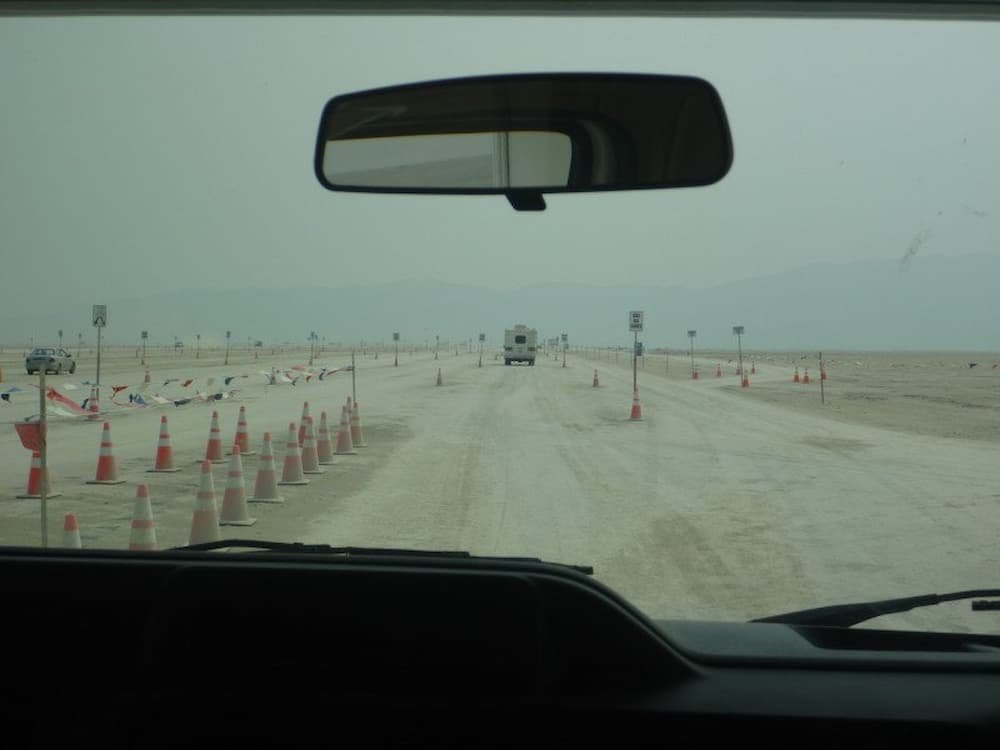
Once on the dirt, we switched to 95.1 on the radio to get all the important information regarding processing into the city. If you chose to pick up your tickets at Will Call then you have a slight detour before arriving at the first checkpoint. This is where the volunteers jump onboard and loosely check your vehicle for contraband and more importantly stowaways (don’t let this stress you as they are not law enforcement and also turned out to be some of the most friendly people).
A short drive later and you arrive at the entrance to the city where you will be met by the ‘Greeters’. These friendly (mostly naked) folk are there to greet new arrivals and can be heard shouting “Welcome Home”. They handed us a thick book that seemed to cover every event for the week.
If you are a first-timer (virgin burner) like we were you get to hit the gong.
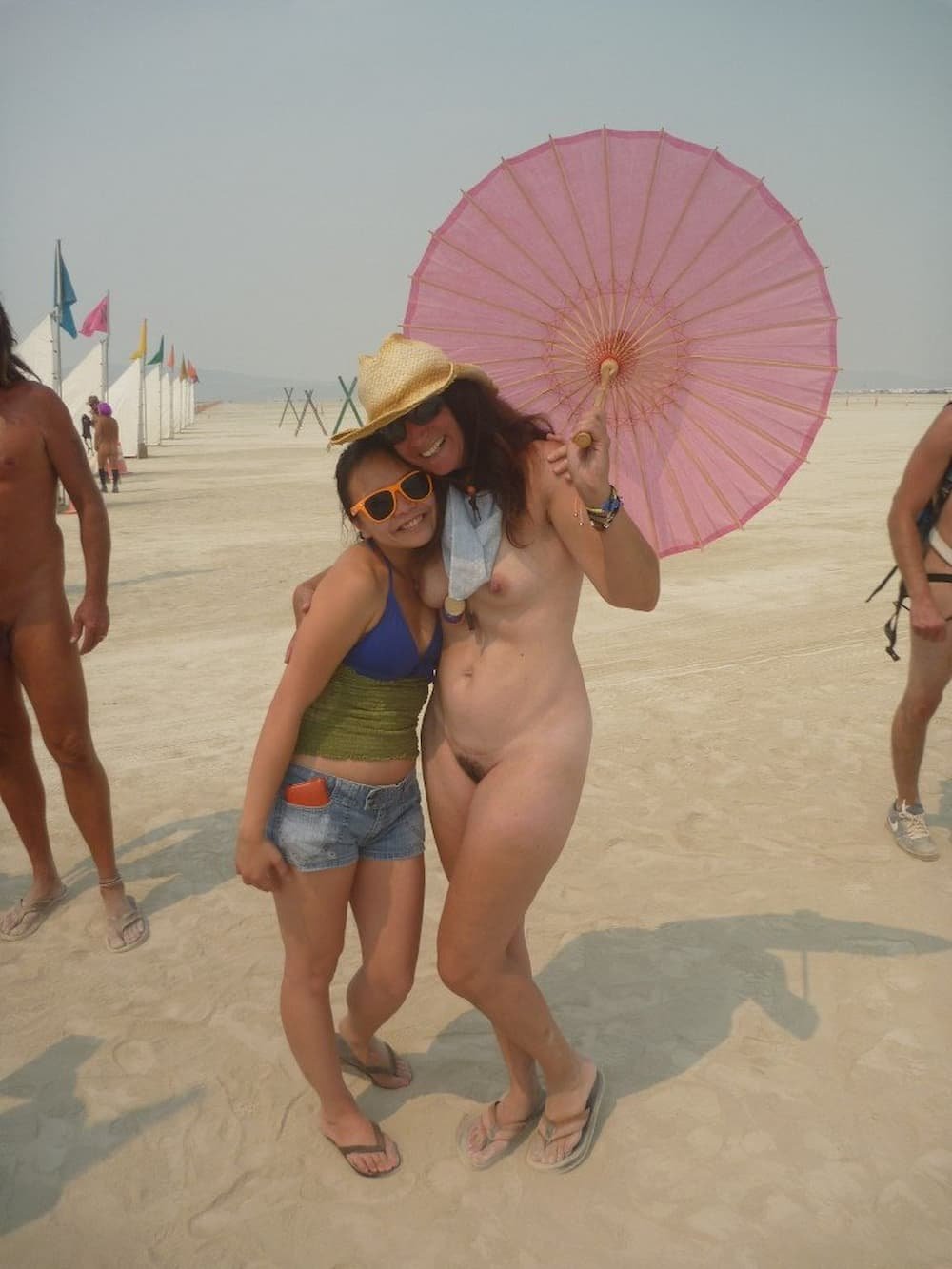

Once you are in the city and have found a spot you need to set up your camp. Since we had an RV we were pretty sorted but I’m sure you can imagine that for some people with tents etc. the fun is just beginning.
There are a few considerations that you need to think about when setting up your camp.
This is very very important for two reasons.
1. The ground is very brittle with a thin crusty layer so make sure you use rebar or at least multiple anchor points.
2. The wind can gust up to 70 mph (112 kph)
During the day the temperature can get close to 100° F (37° C) so you will want to have some shelter from the sun’s rays. Preferably a well-ventilated area.
It is a good idea to meet and greet the people adjacent to your campsite before setting up camp. This will set things off on the right foot establishing good communication and respect from the start…. not to mention you get to make some new friends.

This one is not only to make your camp look pretty but also as a safety precaution. Remember that at night it is very easy for someone to wander into your camp and trip over a guide line or metal peg in the ground if it is too dark.
With a ‘leave no trace’ philosophy you want to ensure that you set up a garbage policy in your camp. Everyone should know where to discard their rubbish and this needs to be enforced.

Black Rock City is not your typical city, you can’t just text your friends to arrange a meeting place if you get split up. While there have been huge advances in the infrastructure over the last few years it is still a place you can easily get lost.
There is no cell phone signal but unbelievably there were a few places in the city where you could connect to wifi. Apparently, some camps had set up a hot spot. Needless to say, the coverage was very patchy and you needed to be within a couple of blocks to connect.
If you don’t make very clear instructions with your friends on where and when to meet you will likely miss each other. The best thing to do when you arrive is to register your camp and self at the Playa Information. There are a number of computer terminals set up at Center Camp and you can leave a message for your friends or check messages others may have left for you.
While this works well in theory, in practice it is a different story as I found out. I left a number of messages for a couple of friends because I didn’t know where they were camped but unfortunately, they never checked them.
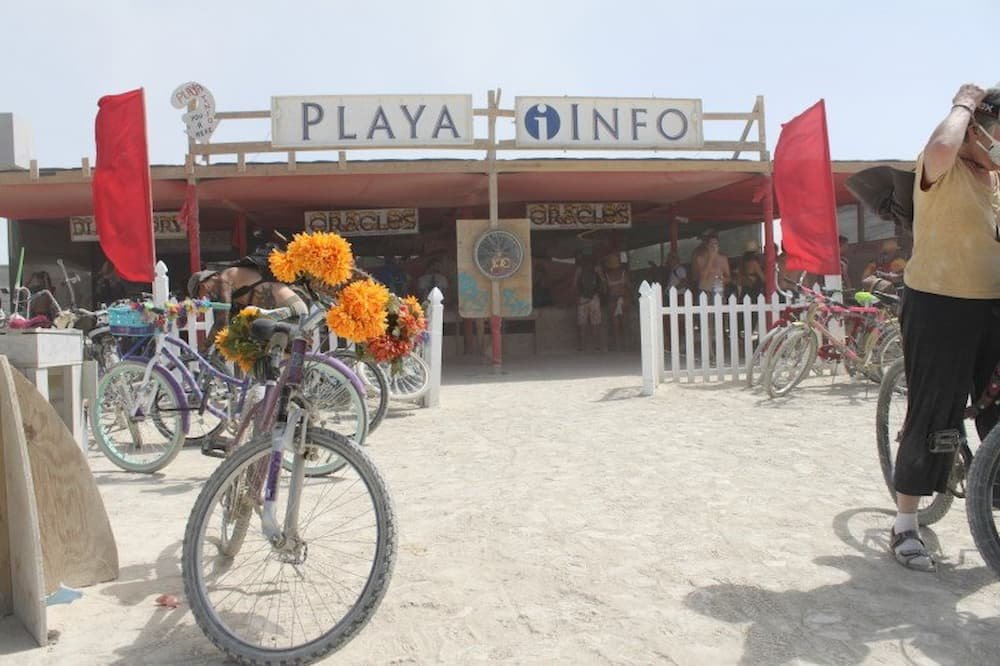
We thought that we came prepared to communicate by purchasing three Motorola Walkie-Talkies……we were wrong. First issue was quality or lack thereof. While in the deep playa the winds can get pretty fierce making it very difficult to hear the person at the other end. Second issue was competition – with only 22 channels to choose from we were constantly competing with other people for air time.
So my suggestions would be these:
– Make sure your friends know how you will communicate with them, whether this be at the information or on a sign.
– Organize a group meeting point to be used if anyone goes missing.
Ok I think it is probably best to finish Part 1 of this series here. I will be writing Part 2 (and possibly Part 3) over the next few days and will place a link below when they are up.
UPDATE: Here is the link to Part 2: Burning Man – Art, Theme Camps and More
All questions and comments are welcome.
My fascination with festivals has seen me travel to some amazing places around the world. Last year I was fortunate enough to tick off one of the largest food fights in the world – La Tomatina in Buñol, Spain. While this took some preparation it pales in comparison to what is required for our upcoming adventure in just over a week.
A week-long festival in the middle of the desert you say – sounds interesting enough to grab your attention doesn’t it? Well, let me tell you this is no ordinary festival… this is Burning Man.
Since moving to San Francisco a little under two years ago, Lisette and I have wanted to make the trip to Black Rock City to see what all the fuss is about with this thing called Burning Man (BM). When we first arrived here in 2011, we met up with some people who had just come back from their first burn while out for a drink one night. You could literally feel their excitement of what they had just experienced from the moment they started talking to us. They went on to describe this “life-changing” event and how we MUST go.
Well, here we are, one week away from what can only be described as the most intense seven days of our lives, dedicated to community, art, self-expression, and self-reliance.
Before I start I want to be very clear about one thing – I AM NO EXPERT! That’s right, this is in fact our virgin burn so please take this post (and any that follow) as my opinions and experiences only. My reasons for writing this are purely to outline what one might expect and to pass on the resources that I used. Believe me when I say there are a million articles out there so do your own research in addition to what I provide.
Ok so with that out of the way let’s get started. The idea below was to divide the preparation into stages to make it easier to follow. It worked for me so let's hope it works for you too.
Pretty simple philosophy here – if you don’t have a ticket well then you ain’t going are you?
How many of you have waited in line for hours/days to secure a ticket to see your favorite band’s concert? Nowadays the line has been replaced with sitting in front of your computer, vigorously pressing the refresh button while praying to the interweb gods that the server doesn’t crash. This mad ‘bum rush’ for tickets often occurs at the most inconvenient of times too.
Well, I’m sorry to tell you but this is the dance we do for BM also…… here is the link to purchase tickets.
As you probably already know, tickets sell out so I wanted to make sure I registered nice and early (back in December 2012). The initial release of tickets was priced at a whopping $650 each. These were marketed as fully transferrable, first-come, first-served tickets…… I couldn’t help but draw parallels with the airline industry.
This initial Holiday Sale ran from the 20th of December 2012, almost two months prior to the Individual Sale release. My guess is that this was probably targeted toward people who were unable to secure a ticket last year.
We decided to wait for the main release of tickets which went live at 12pm (PST) on the 13th of February. These tickets were priced considerably lower at $380 each. After coordinating with friends, who were also going, we jumped online and played the screen refresh game for over two hours before a friend managed to secure them on our behalf. Excited much!
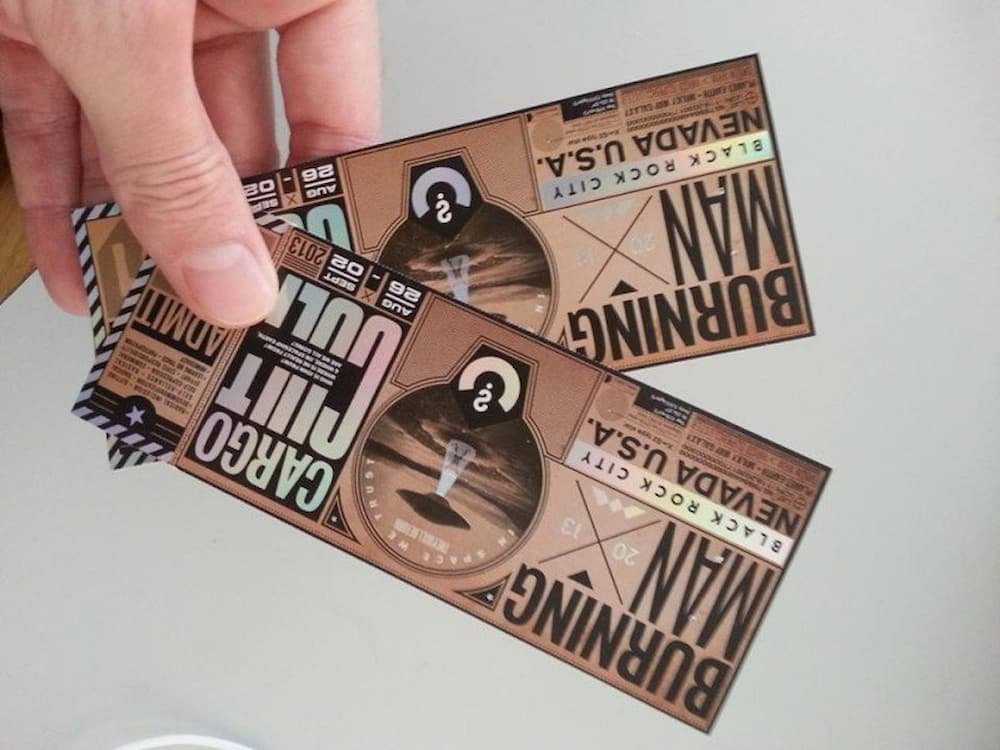
This was the schedule for the different ticket types for this year’s festival:
Registration: 14th December 2012 – 19th December 2012
Sale: 20th December – …
– 3,000 tickets available at $650 each, plus applicable fees.
– Tickets limited to four (4) per person
Registration: Based upon past history, Burning Man targeted specific groups within the community for participation in the Directed Group Sale.
Sale: 30th January 2013
– 10,000 tickets available at $380 each, plus applicable fees.
– Tickets limited to two (2) per person.
Registration: 4th January 2013
Sale: 10th January 2013 until sold out
– 4,000 tickets available at $190 each. These tickets are reserved for participants on a limited income who cannot otherwise afford a regular-priced ticket.
– Tickets are limited to one (1) per person.
Registration: 6th February 2013 – 10th February 2013
Sale: 13th February 2013 until sold out
– 40,000 tickets available at $380 each, plus applicable fees.
– Limited to two (2) per person
Registration: 2nd August 2013 – 5th August 2013
Sale: 7th August 2013 until sold out
– 4000 tickets available at $380 each, plus applicable fees.
– Limited to two (2) per person
The Secure Ticket Exchange Program (STEP) is an online system that facilitates the safe resale of tickets that have been purchased directly from Burning Man. It’s designed to provide a hassle-free, secure way of buying and selling tickets while avoiding scammers, counterfeits and scalpers.
This program was introduced in conjunction with limiting the number of tickets each individual could purchase to try and stop people from buying up big and selling on eBay or other platforms.
Ask anyone who has already been to BM and they will all tell you that the 10 Burner Principles is the one thing that you MUST reference before you even consider attending.
With that knowledge, I guess it is my social responsibility to make sure I include them in this post – so here they are:
Anyone may be a part of Burning Man. We welcome and respect the stranger. No prerequisites exist for participation in our community.

Burning Man is devoted to acts of gift-giving. The value of a gift is unconditional. Gifting does not contemplate a return or an exchange for something of equal value.

In order to preserve the spirit of gifting, our community seeks to create social environments that are unmediated by commercial sponsorships, transactions, or advertising. We stand ready to protect our culture from such exploitation. We resist the substitution of consumption for participatory experience.
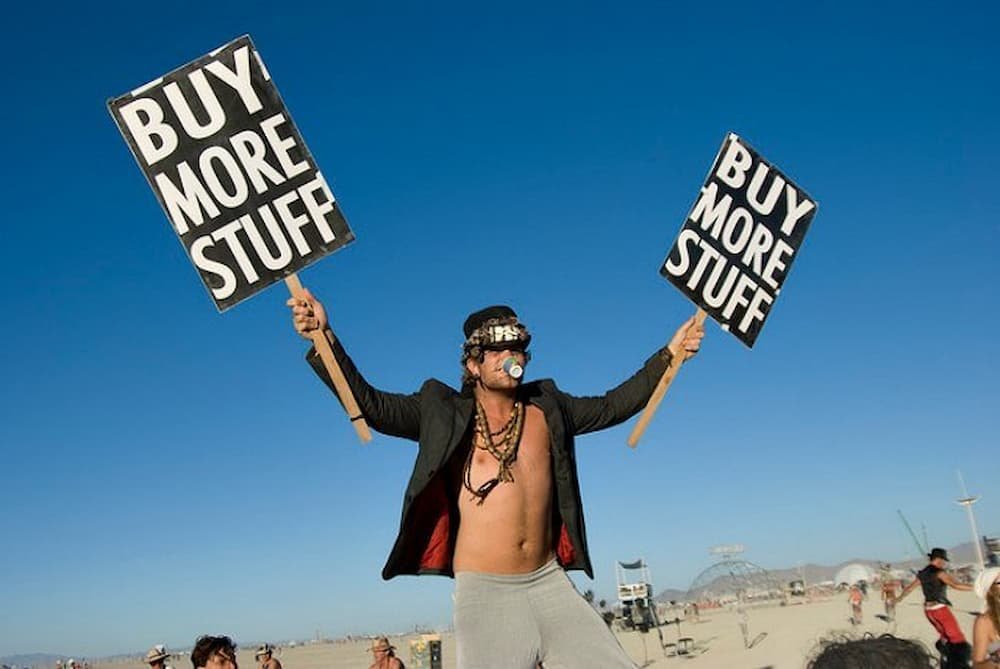
Burning Man encourages the individual to discover, exercise and rely on his or her inner resources.

Radical self-expression arises from the unique gifts of the individual. No one other than the individual or a collaborating group can determine its content. It is offered as a gift to others. In this spirit, the giver should respect the rights and liberties of the recipient.

Our community values creative cooperation and collaboration. We strive to produce, promote, and protect social networks, public spaces, works of art, and methods of communication that support such interaction.

We value civil society. Community members who organize events should assume responsibility for public welfare and endeavor to communicate civic responsibilities to participants. They must also assume responsibility for conducting events in accordance with local, state and federal laws.

Our community respects the environment. We are committed to leaving no physical trace of our activities wherever we gather. We clean up after ourselves and endeavor, whenever possible, to leave such places in a better state than when we found them.

Our community is committed to a radically participatory ethic. We believe that transformative change, whether in the individual or in society, can occur only through the medium of deeply personal participation. We achieve being through doing. Everyone is invited to work. Everyone is invited to play. We make the world real through actions that open the heart.

Immediate experience is, in many ways, the most important touchstone of value in our culture. We seek to overcome barriers that stand between us and a recognition of our inner selves, the reality of those around us, participation in society, and contact with a natural world exceeding human powers. No idea can substitute for this experience.

If you read some of the forums you will see that there is an ongoing debate from the old school burners about people arriving in RVs. I won’t go as far to say that they are hated but let's just say they are not so welcome. Apparently, they create a walled community that is both uninviting and ugly….or something like that.
I am a big fan of camping and happy to pitch a tent pretty much anywhere but we decided to go the easy route for our first time and hire an RV. The fact that we don’t own a car (or a tent for that matter) made the decision a little easier but really it came down to a combination of comfort and convenience.
Being able to pack everything up in the van and just rock up to a campsite was very appealing. As we have three in our group, it was nice to have something a little larger too – something with a shower was the ultimate winner.
As a couple of budding DJs, we also have a sound system that we will be taking with us. The RV has a generator so power is much more accessible and we are hoping that it will also provide an important windbreak during dust storms…… fingers crossed.
Clearly, there is a price to be paid when going with this option. It works out that we will be spending about $2000 USD just to have the comforts of home. If you are more budget-conscious then I would recommend going with the tent option.
Below is a picture of the RV that we will be taking.
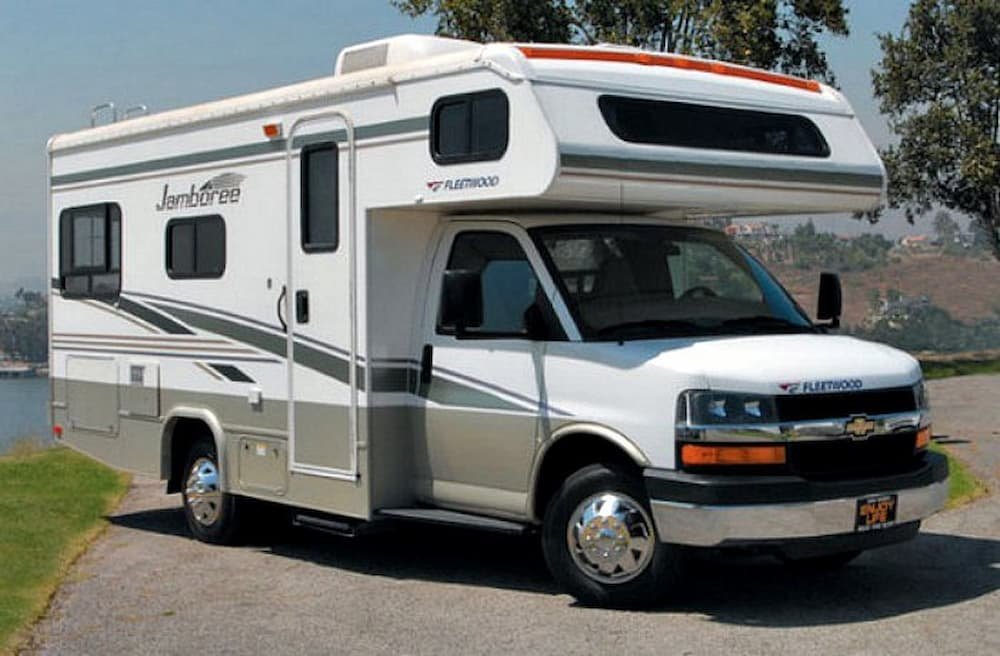
Another big decision, especially for your first burn, is whether to join a theme camp or go it solo. Before choosing a side it is always best to weigh up the options to find the choice that suits you.
Joining a theme camp has the benefit of strength in numbers. Whether you are in a camp with friends or you are joining an existing camp you need to know what you are in for. Ask yourself this question?
Could you see yourself living in a close, confined space with these people?
Time will tell as to whether we made the right decision – if there is such a thing. I feel that we are going to have an incredibly collaborative experience regardless of the fact that we have chosen not to join a theme camp. I guess that all comes down to how open and welcoming we make the area around our camp.
Surely this is the most stressful part of any first-timers experience, I know it has been for me.
This packing list compiled by Stitch is possibly the most comprehensive that I managed to find. To quote “…it is compiled from multiple Burner’s lists accumulated over the past 17 years. What one person needs another does not, so all of this is included so you can make your own decision about what to bring & cross out what you don’t. The food and clothing section is fairly minimal because everyone has different tastes”.
Here is another one by Ben Guild which outlines what he took on his first burn. You can clearly see the differences.
Rather than posting my own list here in this post, I have decided to do a follow-up article after I get back. In this article, I will go into more detail about what I specifically packed, what I really used, what I wish I had taken, what I could have left off, and what got wrecked.

Something essential that you must not forget is a bike. I picked this funky little sucker up at Walmart for under $100.

An aspect that is rarely considered is the emotional impact that BM will have on you, not only as a newbie but even a seasoned veteran.
Not too long ago I reached out to Chip Conley, the founder and former CEO of Joie de Vivre hotels and festival fanatic. As a matter of fact, Chip is on the board of the Burning Man Project and recently launched his latest project Fest300.com, with the aim of creating a community of festival lovers.
As a seasoned burner, with seven burns under his belt, Chip realized that there wasn’t really a guide on how to prepare emotionally….so he wrote one and I strongly suggest that you read it – Emotional Survival Guide to Burning Man.
Here are some of my favorite excerpts from the article:
“Islands are more intense……”
“Island fever’, the feeling of being stuck somewhere without an ability to escape, is something you’ve probably experienced if you’ve spent any time on an island. Whether Balinese or Hawaiian, islands can bring forth magnified emotions and increased volatility alongside (sometimes) unpredictable volcanoes. Burning Man is a desert island.”
“Emotions are contagious, especially in the Petri dish of Burning Man. Psychological studies show that our reference group has a big impact on our perception of our wants and our needs. This is one of the values in hanging out with people different than you. They help to modify the narrative in our heads. In the context of Black Rock City, your camping mates will have a significant influence on your experience…or even your perceived experience of your experience. So, choose your neighbors wisely.”
“Cruising around solo is a good thing. It allows you to meet people you wouldn’t have met otherwise.”
I want to clarify that BM is more than just a festival, it is a way of life. There are many reasons why people keep coming back year after year and it would be impossible to list every reason in this post. For me personally, it will be a combination of personal exploration,
For the majority of people, their initial impression of BM is through a photo they have seen from one of the incredible art installations on the playa. No matter who you are, everyone can appreciate the work and creativity that has gone into making these grandiose structures.
Personally, I cannot wait to be pedaling my bike from piece to piece, carefree to explore the imagination of the artists.
The BM site releases an honorarium guide to the art each year, along with a comprehensive audio tour. Here are the links for each below:
Download the .zip file for the Audio Tour


Let me start by saying that Burning Man is NOT A MUSIC FESTIVAL like Coachella etc. No bands are booked to play there. There is no line-up. There is music, but the performers pay their own way. Most of the music is electronic and there are usually many famous DJs.
If you are lucky enough to know when are where they are playing you may get to see them spin ….for free. The key is knowing who and where.
One of the best resources available to answer this question is the Rock Star Librarian. They have posted what can only be described as the most comprehensive guide to music on the playa. You can check out this year’s guide here – 2013 RSL Music Guide.
I am a huge Deep House music lover so this year I am looking forward to seeing: Waifs and Strays, Funkagenda, Michael Woods, Thugfucker and Philipp from M.A.N.D.Y. to name just a handful.
Well, there you have it… that’s all I have for this post – I guess I can’t really tell you too much more until I have had a chance to experience it for myself. It is now less than one week until we get the flock out of here, bound for our first burn. Yippppeeeeeee!
Once I get back (after sufficient recovery time), I will start working on a follow-up post that will describe my entire experience including the following topics and many more that I haven’t even thought of yet:
I dream of traveling the world – experiencing rich cultures and learning new things. Walking past innately sculptured ancient architecture, smelling their local dishes,v and taking a leap of faith by embracing their traditions.
You’ll never know what realization you will get until you start your journey. I decided to go back to Japan after visiting Tokyo two years ago. This time, I decided to lose myself in the old streets of Kansai.
The cultural charm of the place envelopes you wherever you go. So just brace yourself, and trust your gut – take a big gulp and prep yourself up to have a one-of-a-kind adventure because Kansai nurses a number of World Heritage Sites – each with its own story.
The Kinkaku-Ji (Rokuon-Ji) Temple which is the villa of Kintsune Saionji back in 1220, also known as the Golden Pavillion will surprise you with its astounding beauty. The crystal-like water together with a blast of sunlight creates a wonderful reflection. The rich green garden path around the area is perfect for snapping away and capturing the moment. It can be encapsulated by the word Zen – as they say, simplicity is key.
I was lucky to have visited Kyoto during a busy week. There was a large student population celebrating the Intercollegiate Festa featuring a music competition, fashion exhibition, parades, and a food expo with a smorgasbord of delicacies from all over the world. I tried and tasted treats made from scratch by the kids.


The event also featured traditional dances with a modern twist prepared by students. The fierce movement captures the quintessential Kansai mixed with the youthful glow of the performers keeping the audience glued to their seats.
Not to mention its movie appeal, as it was the setting for one of the scenes in Memoirs of a Geisha.
Another must-see is the Fushimi Inari Shrine. It houses thousands of never-ending toriis – a sight to behold. The complex is composed of five shrines spread out over the area.


My favorite part of the whole trip was exploring Sanjusangendo which means Hall with 33 bays. Its exhibit ground will astound you with its vast collection of National treasures – 1,001 Kannon statues together with 28 guardian deities.
In search of the perfect torii, I around the nature trail of Nara. Deers stroll along with you as the cool breeze brushes your face. Hours of walking will surely take their toll – but worry not, there are food stops along the way. I urge you to reward yourself with a Green tea ice cream! It’s worth it!

I encourage travelers to find the perfect charm in Kansai. There are a lot of temples selling a little bit of luck for every need – for expecting mothers, for health, to pass an exam, reach your goal, and, of course, for love. You may or may not believe in them but having one surely makes your trip worthwhile – it can just plainly be your souvenir or the perfect gift for your friends back home.
You can also write on wooden blocks and wish – or simply use them as memorabilia. Don’t worry about strictly following your itinerary – surprise yourself and travel to your heart’s content!

